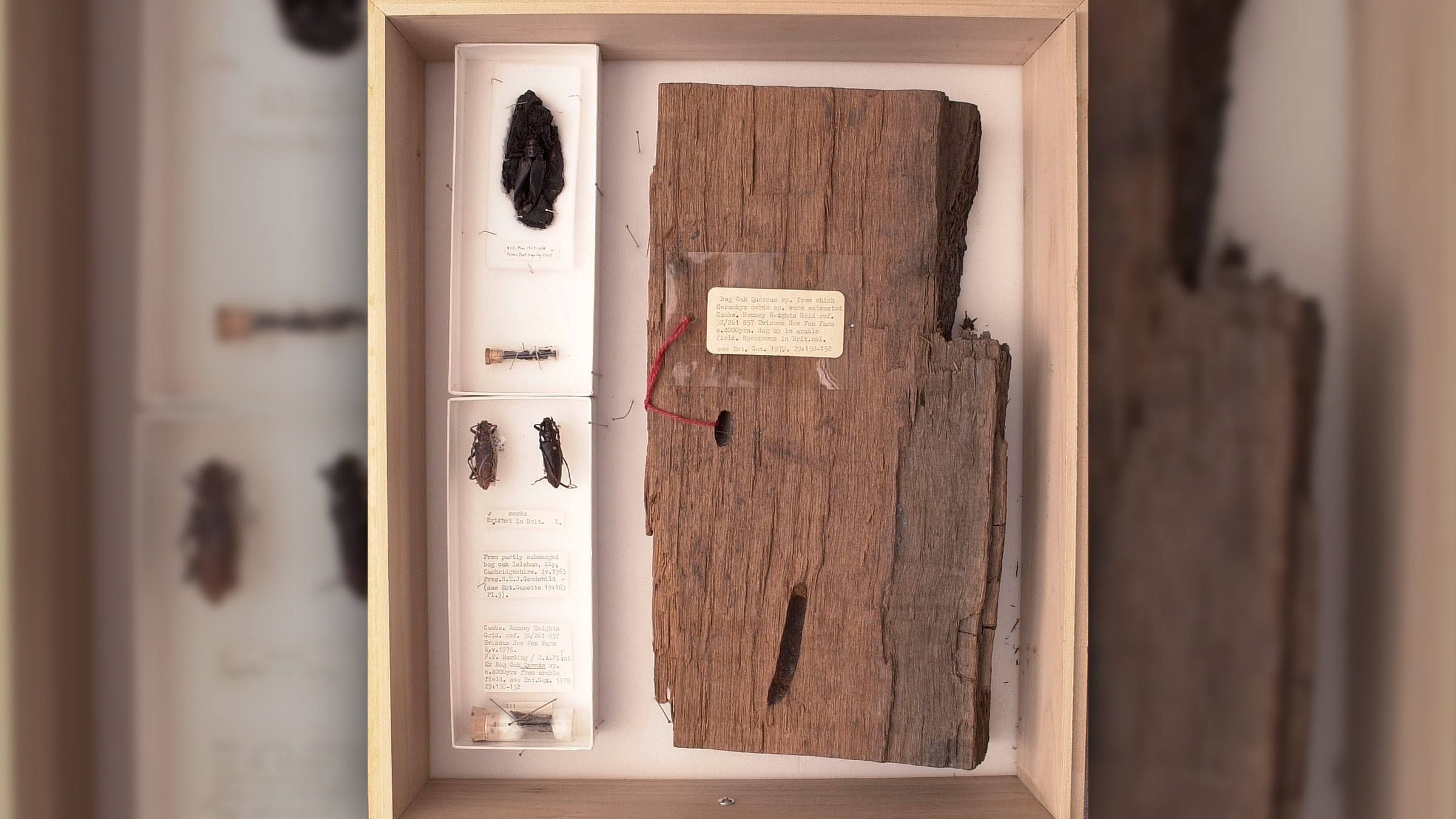Perfectly-preserved 'bog beetles' nearly as old as Egypt's pyramids
A bog preserved these beetles' bodies.

Two thumb-size beetles found preserved in an English bog may look as though they died as recently as yesterday, but in reality they're nearly as ancient as Egypt's pyramids, new research finds.
The two oak capricorn beetles (that belonged to the genus Cerambyx) date back 3,785 years, according to radiocarbon dating. That means these beetles perished inside a piece of bogwood just as the last woolly mammoths were dying out on Siberia's Wrangel Island, half a world over.
"These beetles are older than the Tudors, older than the Roman occupation of Britain, even older than the Roman Empire," Max Barclay, curator of beetles at the Natural History Museum (NHM) in London, said in a statement. "These beetles were alive and chewing the inside of that piece of wood when the pharaohs were building the pyramids in Egypt. It is tremendously exciting."
Related: Photos of the best preserved bog people
The bog beetles have been part of the NHM collection since the late 1970s, after a farmer discovered the lifeless beetles in a piece of wood on his farm in East Anglia, on the eastern coast of England known for its Bronze and Iron Age settlements, as well as its bogs. These waterlogged bogs have low-oxygen, highly-acidic conditions known for preserving organic matter, including dead bodies, Live Science previously reported.
"As far as I know, the story is this: A farmer in eastern England was cutting up wood he'd found while doing some deep ploughing and discovered these insects inside; dead, of course," Barclay told the BBC. "This was a huge piece of waterlogged oak, and he sent us a sample."

The donation caught the attention of curators, who identified the insects as oak capricorn beetles — named for their long curved antennae, which look like the horns of the alpine ibex (Capra ibex).
Sign up for the Live Science daily newsletter now
Get the world’s most fascinating discoveries delivered straight to your inbox.
Cooling temperatures from climate change may have caused the oak capricorn beetle to go extinct in England, but not in Southern and Central Europe, where they live today, Barclay said in the statement. "This is a beetle that is associated with warmer climates," he said. "Possibly it existed in Britain 4,000 years ago because the climate was warmer, and as the climate cooled and the habitats destroyed, it became extinct."
"Now, with global warming, there are indications that it could return to Britain in the future," Barclay added.
Granted, the beetles will have to find the right habitat. Oak capricorn beetles, which live for just three to five years, lay their eggs in the deadwood part of very old, unshaded living trees, according to a fact sheet from the European Union. The adults can fly, albeit poorly, and are usually found within one-third of a mile (500 meters) of their tree.
"It is quite extraordinary to hold something in your hand that looks like it was collected yesterday but is actually several millennia old," Barclay said.
Originally published on Live Science.

Laura is the archaeology and Life's Little Mysteries editor at Live Science. She also reports on general science, including paleontology. Her work has appeared in The New York Times, Scholastic, Popular Science and Spectrum, a site on autism research. She has won multiple awards from the Society of Professional Journalists and the Washington Newspaper Publishers Association for her reporting at a weekly newspaper near Seattle. Laura holds a bachelor's degree in English literature and psychology from Washington University in St. Louis and a master's degree in science writing from NYU.









